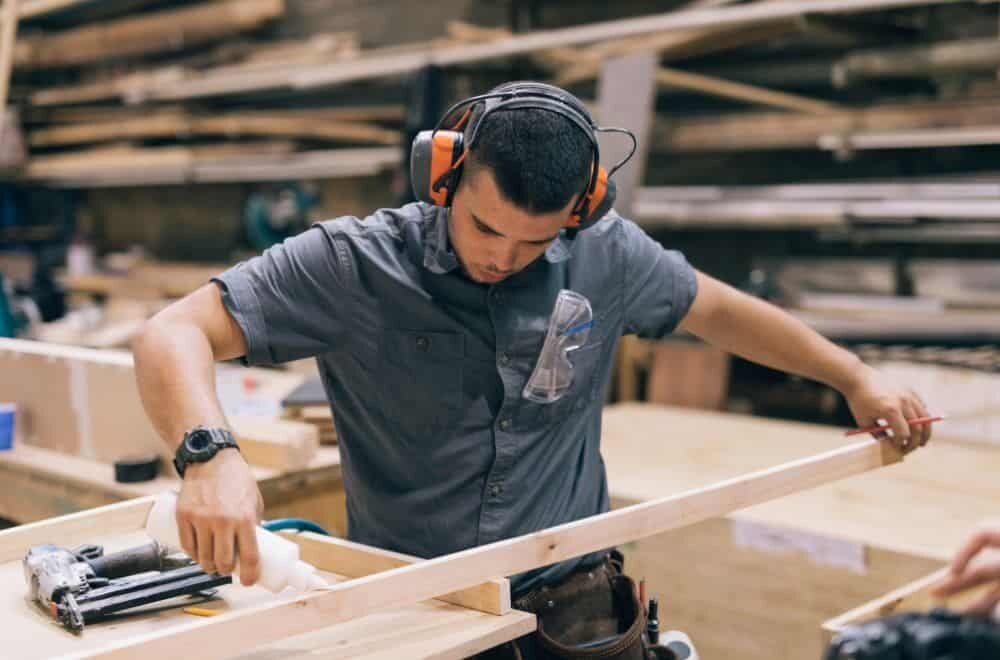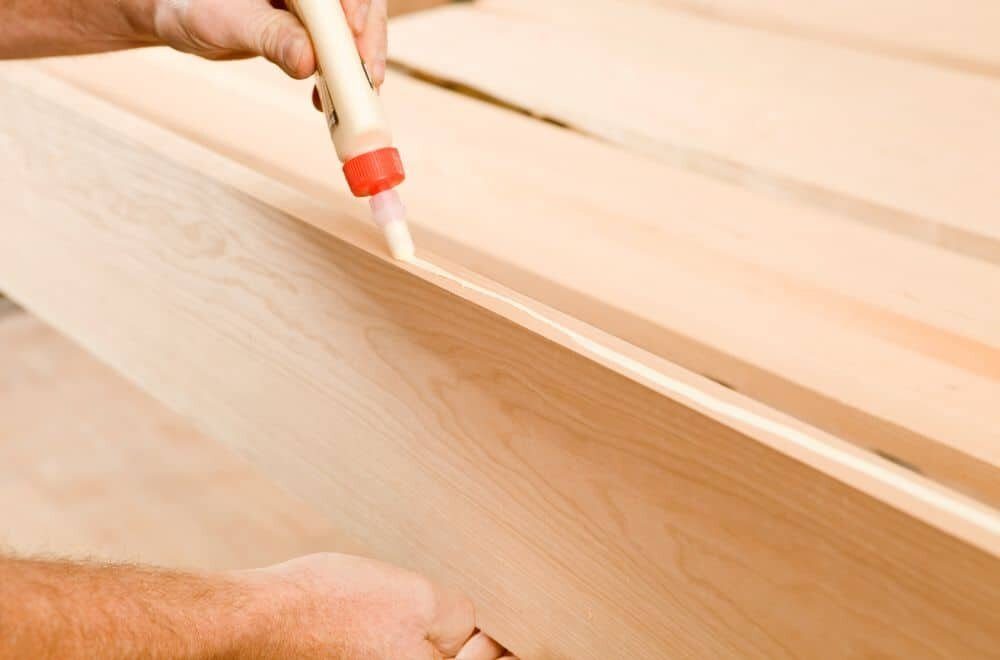Are you looking to spruce up the curb appeal of your home? Painting your wooden garage door can be a simple and cost-effective way to achieve this. Not only will a fresh coat of paint enhance the appearance of your home, but it can also protect your garage door from the elements and extend its lifespan.
Before you get started, it’s important to properly prepare your garage door for painting. This includes cleaning the surface thoroughly and sanding any rough spots. You’ll also need to choose the right type of paint and tools for the job. With the right preparation and technique, you can achieve a professional-looking finish that will make your garage door the envy of the neighborhood.
Understanding the Basics of Painting
Before you start painting your wooden garage door, it’s important to understand the basics of painting. This will ensure that your project goes smoothly and that you end up with a beautiful and long-lasting finish.
Choosing the Right Paint
The first step in painting your garage door is choosing the right paint. You’ll want to choose a high-quality exterior paint that is specifically designed for use on wood. Look for a paint that is water-resistant and has UV protection to prevent fading and peeling.
When choosing a color, keep in mind that darker colors will absorb more heat from the sun, which can cause the paint to crack and peel over time. Lighter colors are a better choice if you live in a hot and sunny climate.
Identifying the Wood Type
Before you start painting, it’s important to identify the type of wood your garage door is made of. Different types of wood require different types of preparation and paint.
If your garage door is made of cedar or redwood, it’s important to use an oil-based primer before painting. This will help to seal the wood and prevent tannin stains from bleeding through the paint.
If your garage door is made of pine or another softwood, it’s important to use a wood conditioner before painting. This will help to even out the wood’s porosity and prevent the paint from soaking in too deeply.
By choosing the right paint and identifying the wood type, you’ll be well on your way to a successful garage door painting project.
Preparing the Garage Door
Before painting your wooden garage door, you need to prepare it properly to ensure that the paint will adhere well and last longer. This section will guide you on how to prepare your garage door for painting.
Cleaning the Door
The first step in preparing your garage door is to clean it thoroughly. Dirt, grime, and other substances can prevent the paint from sticking to the surface, causing it to peel off easily. Here’s how to clean your garage door:
- Remove any loose dirt and debris using a broom or a dry brush.
- Mix a solution of warm water and mild detergent in a bucket.
- Dip a sponge or a soft-bristled brush into the solution and scrub the garage door thoroughly.
- Rinse the door with a hose or a bucket of clean water to remove any soap residue.
- Let the door dry completely before moving on to the next step.
If your garage door has mold or mildew, you can use a solution of bleach and water to remove it. However, be careful when using bleach as it can damage some surfaces and cause discoloration.
Sanding the Surface
After cleaning the garage door, the next step is to sand the surface. Sanding helps to smooth out any rough spots and create a better surface for the paint to adhere to. Here’s how to sand your garage door:
- Use a fine-grit sandpaper (120-150 grit) to sand the entire surface of the door, including the edges and corners.
- Sand in the direction of the wood grain to avoid creating scratches or marks on the surface.
- Wipe the door with a clean, damp cloth to remove any dust or debris.
- Let the door dry completely before moving on to the next step.
If your garage door has any cracks or holes, you can use wood filler to fill them in before sanding. Wood filler is a putty-like substance that hardens when it dries, creating a smooth surface for painting.
By following these steps, you can ensure that your wooden garage door is properly prepared for painting. Taking the time to prepare the surface will help the paint to adhere well and last longer, saving you time and money in the long run.
Painting Techniques
When it comes to painting your wooden garage door, there are three main techniques you can use: using a brush, using a roller, and using a spray. Each technique has its own advantages and disadvantages, so it’s important to choose the one that works best for you.
Using a Brush
Using a brush is the most traditional way to paint a wooden garage door. It allows for precise control and is great for getting into tight corners and edges. However, it can be time-consuming and may leave brush marks if not done correctly.
To use a brush, start by dipping the brush into the paint and tapping off any excess. Then, apply the paint in long, even strokes, working from top to bottom. Be sure to overlap each stroke slightly to avoid leaving any gaps.
Using a Roller
Using a roller is a faster way to paint your garage door, and it’s great for larger, flat surfaces. It can also create a smoother finish than a brush. However, it can be difficult to get into tight corners and edges with a roller.
To use a roller, start by pouring the paint into a roller tray. Then, dip the roller into the paint and roll it back and forth in the tray to evenly distribute the paint. Apply the paint to the garage door in long, even strokes, working from top to bottom. Be sure to overlap each stroke slightly to avoid leaving any gaps.
Using a Spray
Using a spray is the fastest way to paint your garage door, and it can create a very smooth finish. However, it requires more equipment and can be messy if not done correctly. It’s also important to use a respirator mask to protect yourself from inhaling any paint fumes.
To use a spray, start by masking off any areas you don’t want to paint with painter’s tape and plastic sheeting. Then, fill the spray gun with paint and adjust the nozzle to the desired spray pattern. Apply the paint to the garage door in long, even strokes, working from top to bottom. Be sure to overlap each stroke slightly to avoid leaving any gaps.
No matter which technique you choose, be sure to follow the manufacturer’s instructions for the paint and equipment you’re using. And always wear gloves and protective clothing to avoid getting paint on your skin.
Caring for Your Painted Door
Once you’ve painted your wooden garage door, you want to make sure it stays looking great for as long as possible. Here are some tips for caring for your painted door.
Regular Cleaning
Regular cleaning is important to keep your painted garage door looking fresh and new. Here are some steps to follow:
- Use a soft-bristled brush or a sponge to remove any loose dirt or debris from the surface of the door.
- Mix a solution of warm water and mild detergent in a bucket.
- Dip a clean sponge or cloth into the solution and use it to gently clean the surface of the door.
- Rinse the door with clean water using a garden hose or a bucket of clean water and a clean sponge or cloth.
- Allow the door to air dry completely before closing it.
Touching Up Damages
Even with proper care, your painted garage door may still get scratches or chips. Here are some steps to follow to touch up damages:
- Clean the damaged area with soap and water to remove any dirt or debris.
- Sand the damaged area with fine-grit sandpaper until it is smooth and even with the surrounding area.
- Wipe away any dust with a clean, damp cloth and let it dry completely.
- Apply a small amount of paint to the damaged area using a small brush or roller.
- Allow the paint to dry completely before applying a second coat, if necessary.
- Once the paint is dry, inspect the area to ensure it matches the surrounding paint. If it does not, repeat steps 4-5 until it matches.
By following these tips, you can keep your painted garage door looking great for years to come.
Safety Measures
When painting a wooden garage door, it is important to take safety measures to protect yourself and others around you. Here are some tips to ensure a safe painting process.
Using Protective Gear
Before you start painting, make sure to wear protective gear to avoid any accidents or injuries. Here are some essential items you should have:
- Safety glasses or goggles to protect your eyes from paint splatters and debris.
- Gloves to protect your hands from the paint and chemicals in the paint.
- A respirator or mask to protect your lungs from inhaling paint fumes.
Wearing protective gear will not only keep you safe but also make the painting process more comfortable.
Proper Ventilation
Proper ventilation is crucial when painting a garage door. Paint fumes can be harmful if inhaled in large quantities, so it is important to have good air circulation. Here are some tips to ensure proper ventilation:
- Open windows and doors to let fresh air in.
- Use fans to circulate the air and push the fumes out.
- If possible, paint outside or in a well-ventilated area.
Proper ventilation will help you breathe easier and make the painting process safer for everyone involved.
By following these safety measures, you can ensure a safe and successful painting process for your wooden garage door.


